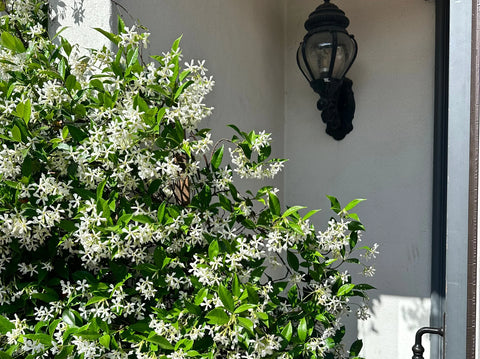The Chinese Pistache is a stunning deciduous tree known for its brilliant fall color and adaptability to a wide range of growing conditions. As a hardy, low-maintenance tree, it is perfect for urban landscapes, large gardens, or as a street tree. In this guide, we’ll walk you through the best practices for planting, caring for, and maintaining this versatile tree.
What is a Chinese Pistache?
Chinese Pistache (Pistacia chinensis) is a medium-sized deciduous tree that can grow up to 25-35 feet tall and 25-30 feet wide at maturity. Its deep green leaves turn vibrant shades of orange, red, and yellow in the fall, creating a breathtaking display. Known for its adaptability, this tree can thrive in poor soil and withstand drought once established, making it a top choice for low-maintenance landscaping.
Why Choose Chinese Pistache?
• Vibrant Fall Color: Few trees match the Chinese Pistache’s stunning fall foliage.
• Low Maintenance: It’s highly drought-tolerant and resistant to pests once established.
• Urban Friendly: Its adaptability to poor soils and pollution makes it ideal for city landscapes.
How to Care for Chinese Pistache
The Chinese Pistache is easy to grow, but providing the right conditions ensures it remains healthy and vibrant.
1. Sunlight Requirements
The Chinese Pistache thrives in full sun. Plant it in a location that receives at least 6 hours of direct sunlight daily to encourage healthy growth and vibrant fall color.
2. Watering Needs
During its first few years, water deeply and regularly to help establish a strong root system. Once established, the Chinese Pistache is highly drought-tolerant and requires little supplemental watering.
3. Ideal Soil and Climate
This tree prefers well-draining soil but is highly adaptable to different soil types, including clay and sandy soils. It is hardy in USDA zones 6-9 and can tolerate both hot and cold climates, making it a versatile choice for many regions.
4. Fertilizing
Fertilize in early spring with a balanced, slow-release fertilizer to encourage vigorous growth. Once mature, the tree rarely needs additional feeding unless the soil is particularly poor.
Common Issues and Solutions
• Leaf Drop: Premature leaf drop can occur due to stress from poor drainage or insufficient water. Ensure proper watering during the establishment period.
• Pests: Chinese Pistache is generally pest-resistant but may occasionally attract aphids. Treat with neem oil or insecticidal soap if necessary.
Pruning and Maintenance
Prune the Chinese Pistache in late winter or early spring to maintain its shape and remove any dead or damaged branches. This will help the tree develop a strong, balanced structure. Minimal pruning is needed once the tree matures.
Final Thoughts on the Chinese Pistache
The Chinese Pistache is a standout tree, ideal for gardeners looking for vibrant fall color and low-maintenance care. Its adaptability to a variety of soil and climate conditions, along with its tolerance for urban pollution, makes it an excellent choice for landscapes big and small. Whether you’re adding a focal point to your yard or creating a shaded area, this tree is sure to enhance your outdoor space.


